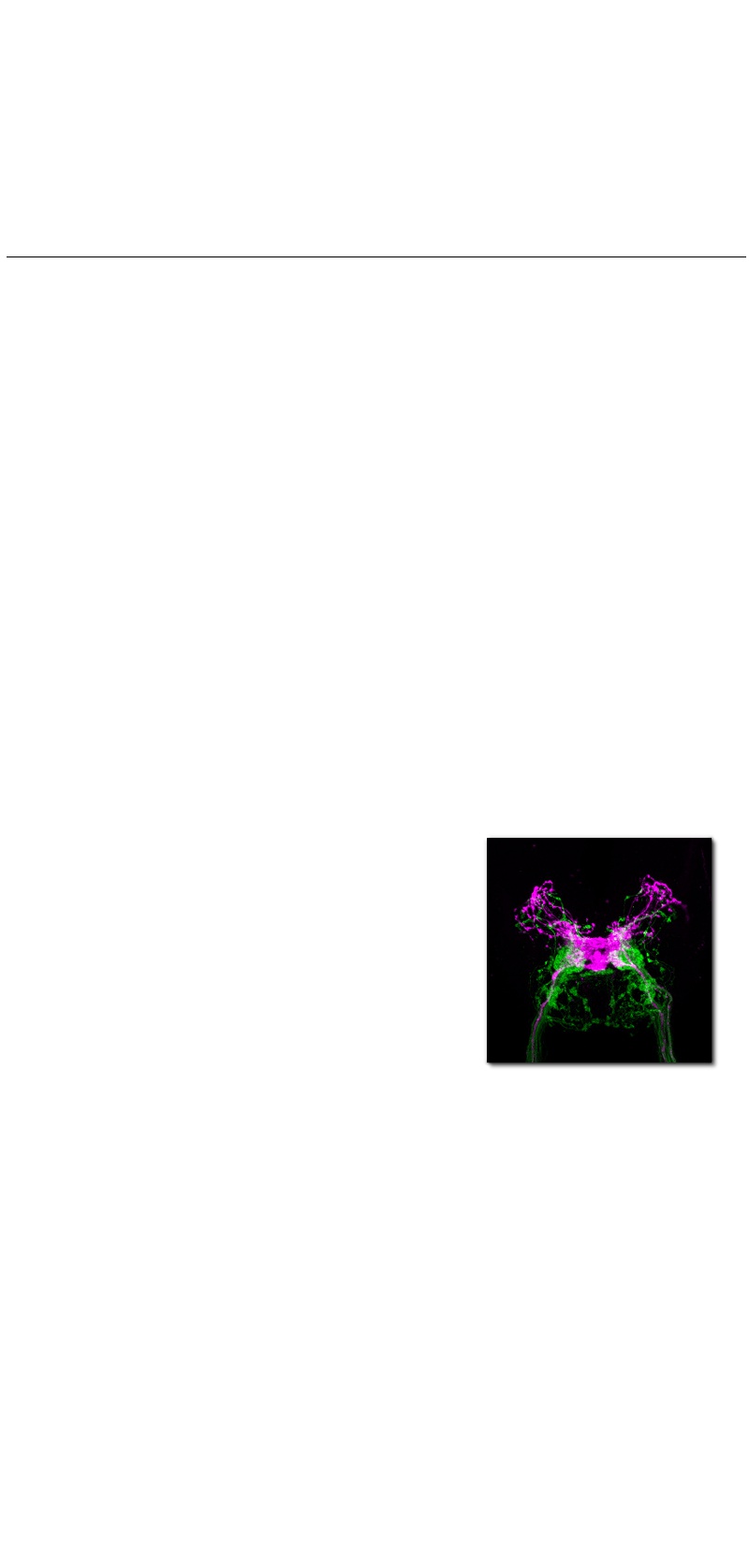


Taste detection in the periphery: How do flies detect
different taste compounds in their environment? Recent work
in the lab has characterized different classes of gustatory
neurons, the taste stimuli they detect and the molecular basis
of detection. These studies have identified four categories of
taste cells (sugar-sensing, bitter-sensing, water-sensing and
carbon dioxide-sensing) and the receptors that underlie
detection. Current work continues to examine taste receptors
in the fly, with the aim of a complete description of taste cell
categories in the periphery.

Our lab studies the gustatory system in Drosophila melanogaster to understand how sensory information is
processed by the brain to give rise to specific behaviors. Drosophila sense many of the same taste stimuli as
mammals, including sugars, salts, acids, alcohols and noxious chemicals. These compounds mediate
acceptance or avoidance behaviors, and activation of a single sensory neuron is sufficient to produce a
behavior. Although innate, taste behaviors may be modified by learning and experience. The simplicity of
ligands and behaviors, along with the molecular, genetic, calcium imaging and electrophysiological
approaches available in Drosophila, allows us to examine taste processing from sensory input to motor
output in a system that can also be modified by learning.
Taste processing in the central nervous system: In the fly
gustatory system, sensory neurons, motor neurons driving
proboscis extension and feeding, and modulatory neurons all
arborize in the same brain region, the subesophageal ganglion
(SOG). One attractive hypothesis is that simple circuits mediating
taste reflexes might be localized to the SOG, but that in addition,
communication between gustatory circuits and higher brain
centers may allow for more complex associations. To understand
how taste information is processed in the fly, we are delineating
taste neural circuits with cellular resolution, using molecular
genetic approaches to label, activate and silence neurons, and
electrophysiological and calcium imaging approaches to monitor
taste-induced activity. These studies aim to examine how the
brain processes taste information to allow for stereotyped
behavior, behavioral plasticity and individual variation.
Modulation of taste behaviors: For an animal to survive in a
constantly changing environment, its behavior must be shaped
by the sensory stimuli it detects, its previous experience and its
internal state. Although taste behaviors in the fly are relatively
simple, with sugars mediating acceptance behavior and bitter
compounds avoidance, these behaviors are also plastic and
modified by intrinsic and extrinsic cues. How intrinsic cues such
as hunger, satiety and thirst and other sensory cues such as
odors or noxious stimuli influence taste behaviors is an area of
increasing interest in the lab.
A fly extends its proboscis to sucrose
This fly has been engineered to express
channelrhodopsin2, a light-gated ion channel, in
sugar-sensing neurons. Illumination with blue light
produces proboscis extension.
Sensory neuron projections in the SOG.
Bitter-sensing neurons are in magenta and
sugar-sensing neurons are in green. Note
that these two classes of neurons arborize in
distinct areas.